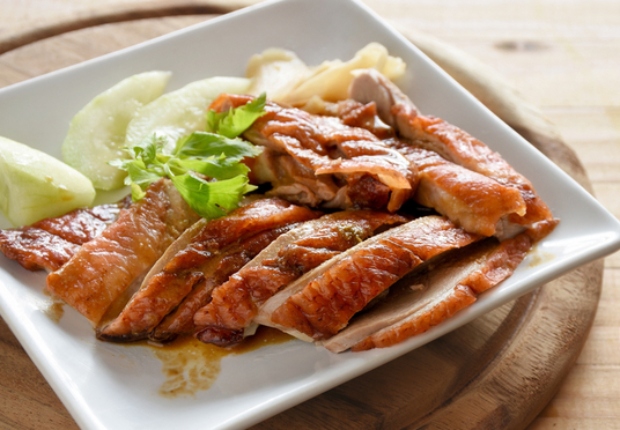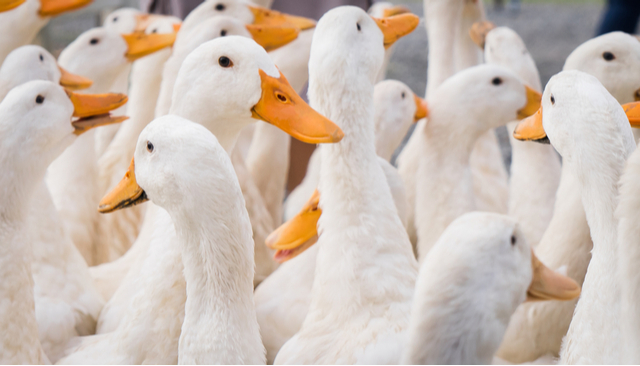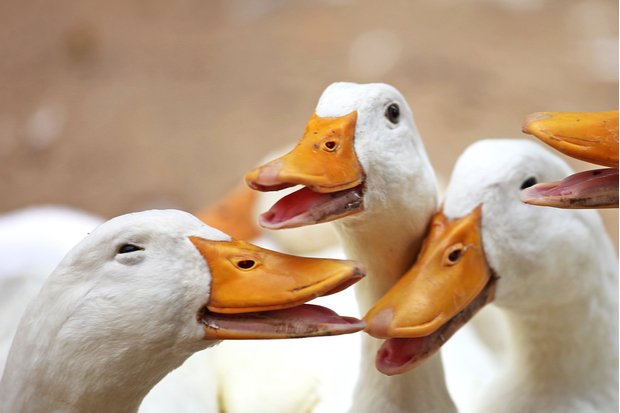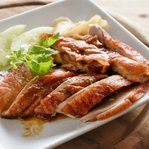Back in the day, Long Island was synonymous with two things: Potatoes and Ducks. Long before the bulldozers moved through and suburban homes and shopping malls sprouted up in their wake, ducks dotted the landscape, especially out east.
Below we present some fun and historical facts about Long Island duck farming.
- Long Island duckling has been featured on the menu at many fine-dining establishments around the world
- Pekin duck is the breed that Long Island became famous for even though it is not native to the region
- The first breed of Pekin Duck was brought from China in 1873
- Four Peking ducks were imported for breeding purposes to Connecticut and then transported to Long Island where they sired an entire industry
- Raising ducks became a full-time industry on Long Island around 1885
- Before that, raising ducks was a supplemental activity to farming and fishing
- Our terrain, climate and demand from New York City fueled Long Island duck farming boom
- In the mid-1900s duck farms on Long Island produced about two-thirds of the duck consumed in the United States
- Duck pickers helped process the duck by picking off feathers
- The duck pickers were mostly women who averaged about 60 ducks per day
- A 1901 newspaper reported that Miss Dolly Raynor of Westhampton was “very likely the best duck picker on Long Island.” She was said to have picked 111 ducks at a farm in Speonk and was paid 5 cents per duck, resulting in a payday of $5.55. “This is certainly a good day’s work,” the paper reported.
- There was even a Long Island Duck Queen Pageant held in the late 1950's to mid 1960's.
- By the 1940s there were about 90 duck farms on Long Island
- A 1953 newspaper article talks about a “duck disease” that attacked duck farms and led to a death toll of up to 75% of all of the stock on Long Island
- During that time, the duck industry was as economically important as the entire commercial fishing industry in New York State

Photo: Shutterstock
- Around 7.5 million ducks per year were grown in Suffolk County during the peak of the duck industry circa 1960
- In 1960 over 40 farms formed the Long Island Duck Farmers Cooperative
- The Long Island Duck Farmers Cooperative closed its plant in the 1980s
- The pollution load from the 34 duck farms operating in Suffolk County during 1968, which raised about 7 million ducks that year, was calculated and found to produce 70 tons total of solids per day, according to a Suffolk County report from 2009
- Thousands of tons of duck farm waste entered, accumulated and polluted streams and adjacent wetlands for decades prior to implementation of a regulatory program
- Stricter NYS regulations addressing water pollution began the decline of duck farming in the 1970s
- According to a report, a 1968 field survey estimated that over 7.3 million cubic yards of sludge were deposited on creek bottoms tributary to Moriches Bay (Forge River, Old Neck Creek, Terrell River, Tuthill Cove, Seatuck Creek, East River, etc.)
- Deposits were reported to be up to 10 feet thick in some areas, and the sludge was covered by only a few inches of water
- At the time, Suffolk County Executive H. Lee Dennison declared to make Suffolk “duckless county”
- Large scale dredging projects to remove duck sludge from the bottoms of impacted waterways resulted in The Suffolk County Department of Public Works removing about 1.5 million cubic yards of material from the tributaries in Moriches Bay prior to 1968; and about 1.6 million cubic yards after 1968 (Suffolk County Department of Planning 1985)
- In the 1980s duck farmers were offered up to $100,000 per acre for their land
- In a New York Times article in 1986 the paper said that “since the 1960's, production of Long Island ducks has dropped from 6 million birds a year to 3.5 million.”
- Many farmers sold their farms to developers and moved out of state

Photo: Shutterstock
- In 2009 there were still three duck farms on Long Island
- Crescent Duck Farm in Aquebogue owned by the Corwin family is now the last surviving duck farm on Long Island and has been in operation since 1908
- The farm produces about one million ducks every year
- According to owner Douglas Corwin, this is about 4% of the nation's duck
- The Big Duck was built by duck farmer Martin Maurer in 1931 to sell duck eggs and poultry
- It’s modeled after a Pekin duck, the species that Long Island farmers became known for
- For more Crazy Big Duck Facts click here
- In honor of its history, Ducks has been the name of at least two major Long Island sports teams: The Long Island Ducks Atlantic League baseball team and the Long Island Ducks Eastern Hockey League minor league team
- Suffolk County has been acquiring ducks farms to preserve for open space












